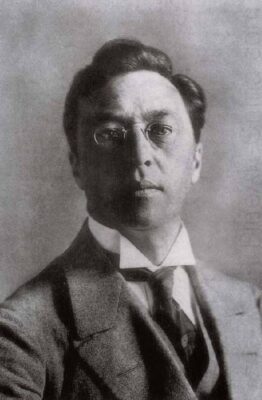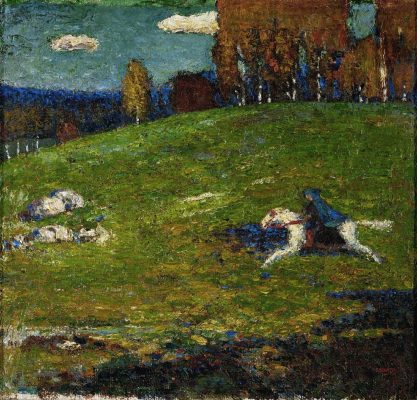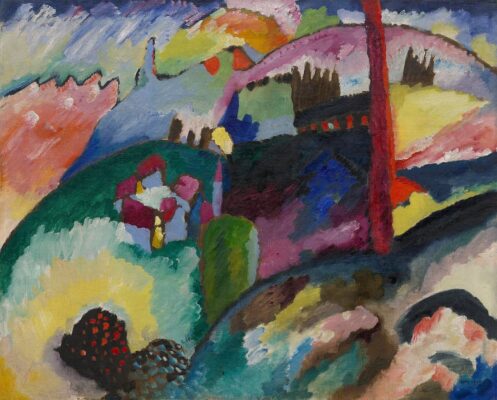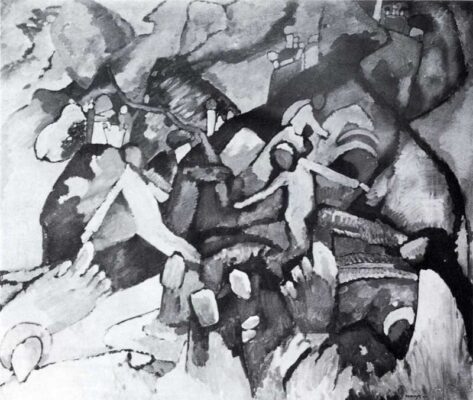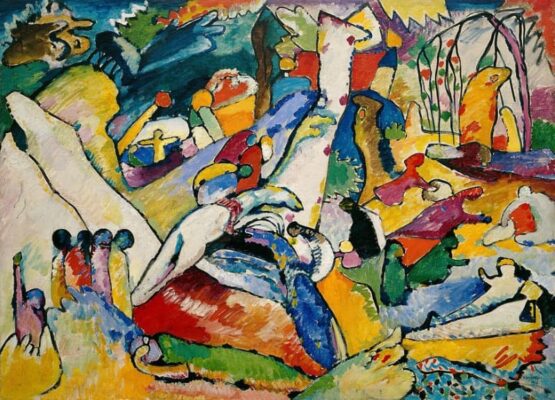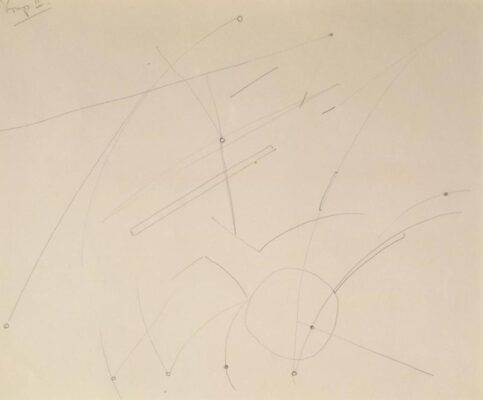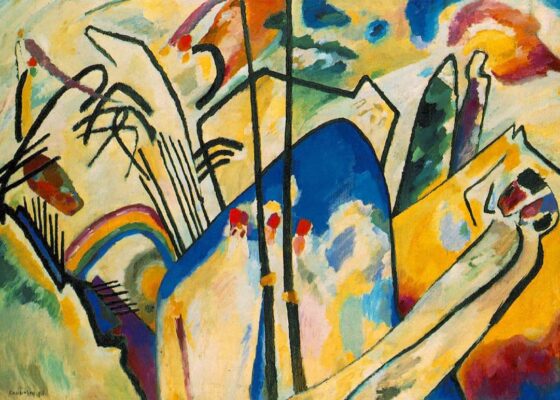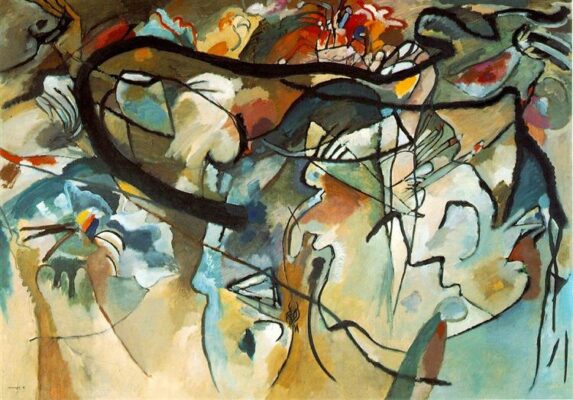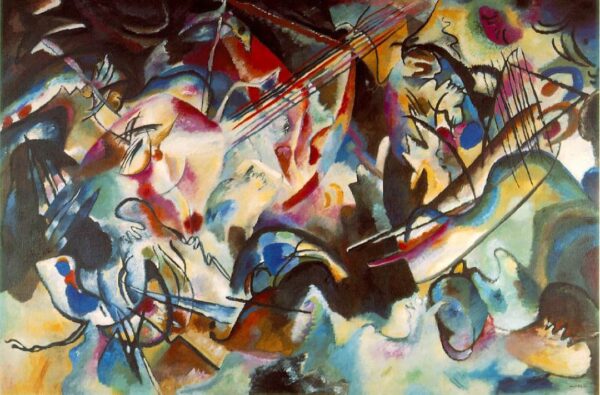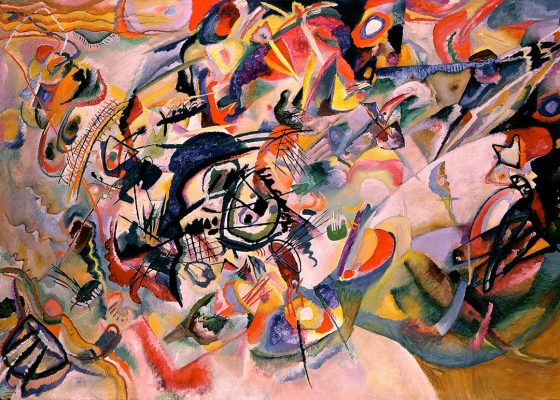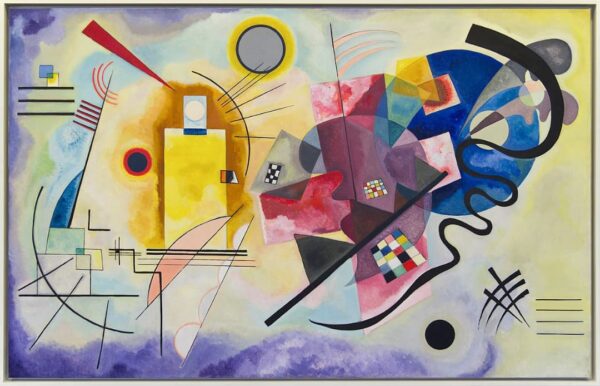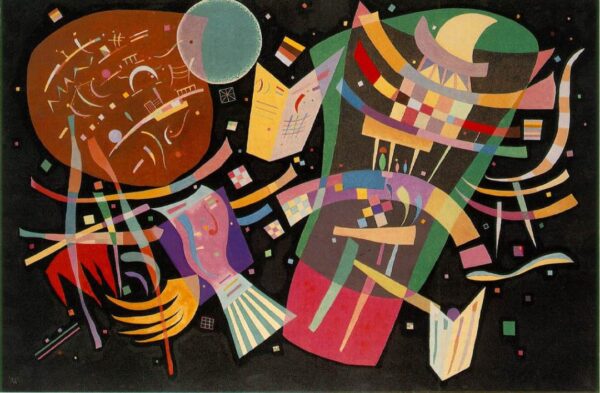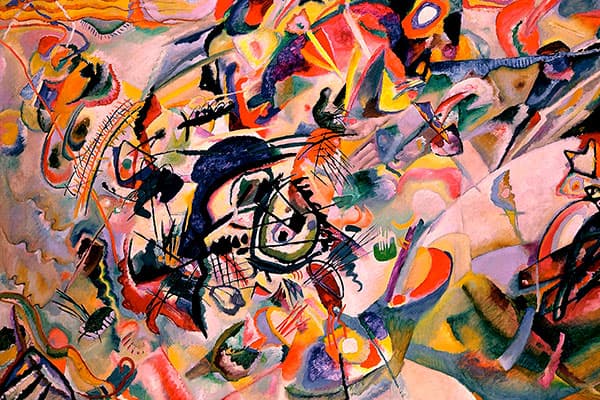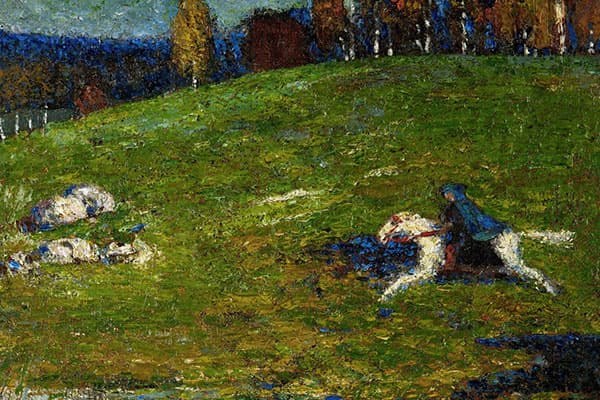Wassily Kandinsky
“Colour is the keyboard, the eyes are the hammer, the soul is the strings. The artist is the hand that plays, touching one key or another, to cause vibrations in the soul.“
Wassily Kandinsky
Few artists -perhaps none- played as decisive a role as Wassily Kandinsky (1866-1944) in the development of abstract art, the greatest revolution in Western art since the Renaissance.
Image: Wassily Kandinsky in 1913
Over a period of three years, at the dawn of the First World War, Kandinsky culminated a personal artistic evolution that had begun 20 years earlier when, impressed by Monet’s painting, he began to experiment with the power of pure paint and the capacity of colour to express feelings. In 1945, less than a year after the artist’s death, the Guggenheim Museum in New York, in a text edited by its then director Hilla von Rebay, already placed Kandinsky in a place of honor in the history of art: “Spiritual Resurrection through art responds in general to the highest human ideals. Open to the influence of harmony and balance it already opposes congealed dead representation in their pretense of reality, henceforth without secrets (…) For all that and for still more, future generations will become more grateful than we can be to this great master. We already feel indebted to him who was able to rise above human nature, to probe with passion, confidence and courage the mysterious waves of the soul: Wassily Kandinsky.”
Kandinsky was born in Moscow in 1866 into an upper-class family. During his youth he took piano lessons and began to study law and economics. But in 1895 he attended an exhibition of works by Monet in Moscow and decided to devote himself to painting, impressed by the colours and strength of the works of the French master. In Kandinsky’s own words:
Up till then I had known nothing but realist art, in effect only the Russians.. .And suddenly for the first time a saw a picture. The catalog told me it was a haystack of Claude Monet; I couldn’t tell it from looking (…) I had the dull sensation that the picture’s subject was missing (…) What was quite plain to me, however, was that the palette had a strength that I have never before suspected, far beyond anything that I had ever dreamt.
Wassily Kandinsky
Wassily Kandinsky: “Der Blaue Reiter (The Blue Rider)”, 1903. Oil on canvas, 52.1 × 54.6 cm. Private collection ·· Wassily Kandinsky: “Landscape with Factory Chimney”, 1910. Oil on canvas, 66.2 × 82 cm. Solomon R. Guggenheim Museum, New York.
Kandinsky decided to move to Germany to study art. There he met Gabriele Münter, an art student who would eventually become a leading Expressionist painter. The two artists lived together, influenced by the Post-Impressionist currents of the time, as is evident in “The Blue Rider” (1903). Although Kandinsky is famous for his works painted from 1910-11 onwards, the study of Kandinsky’s evolution between 1900 and 1910 is really interesting, showing his fascination with Pointillism, Fauvism and other post-impressionist variants, developing an expressionist style of increasingly vivid colours.
In 1911 Kandinsky, together with other artists such as Franz Marc, Paul Klee and Gabriele Münter, founded the group Der Blaue Reiter (The Blue Rider), although it is not yet clear whether the name is a direct reference to the aforementioned painting. Within this heterogeneous group, Kandinsky moved increasingly towards abstraction. In his text “Concerning the spiritual in art” of 1911, Kandinsky explained:
It is never literally true that any form is meaningless and “says nothing.” Every form in the world says something. But its message often fails to reach us, and even if it does, full understanding is often withheld from us.] and, properly speaking, form is the outward expression of this inner meaning.
Wassily Kandinsky
Between 1910 and 1913, Kandinsky created seven large works, which he called simply “Compositions“, which alone illustrate the evolution of Kandinsky’s style from Expressionism to pure abstraction. The first three have unfortunately been lost, although black-and-white photographs or sketches of them have survived. In the most developed of his “Compositions” there is no doubt that we are dealing with an entirely and deliberately abstract art, understood as that which, in opposition to “figurative art”, does not have as its object the representation (even subjective) of observable reality. In the words of Magdalena Dabrowski, “Kandinsky’s guiding principle in the creation of a Composition is the ‘expression of feelings’—or as he puts it elsewhere, the “inner necessity”—that is, the artist’s emotional response to events of an internal nature.” (Magdalena Dabrowski, “Kandinsky compositions”, 1995)
Kandinsky’s “Compositions”:
- “Composition I”, 1910. Lost, black and white photograph.
- “Study for ‘Composition II'”, 1910. Oil on canvas, 97.5 x 131.1 cm. Solomon R. Guggenheim Museum, New York.
- “Schematic Study for ‘Composition III'”, 1910. Drawing, 24.8 x 29.7 cm. Pompidou, Paris.
- “Composition IV”, 1911. Oil on canvas, 159.5 x 250.5 cm. Kunstsammlung Nordrhein-Westfalen
- “Composition V”, 1911. Oil on canvas, 190 x 275 cm. Private collection, New York
- “Composition VI”, 1913. Oil on canvas, 195 x 300 cm. St. Petersburg, Hermitage Museum
- Composition VII”, “1913. Oil on canvas, 200.6 × 302.2 cm. Tretyakov Gallery, Moscow
The First World War disintegrated the group, and Kandinsky returned to Russia, marrying Nina Andreevskaya. In 1922 he moved back to Germany and became one of the full professors at the Bauhaus, both in Weimar and Dessau. Kandinsky’s theoretical facet was as important as his painting, and he gave numerous lectures in Europe and the United States.
With the rise of the Nazis, Kandinsky took refuge in Paris, abandoning the geometric abstraction of his Bauhaus period for more organic forms, reminiscent of his early “compositions” of 1911-1913.
Wassily Kandinsky: “Yellow-Red-Red-Blue”, 1925. Oil on canvas, 128 x 201.5 cm. Musée National d’Art Moderne, Paris ·· Wassily Kandinsky: Composition X”, 1939. Oil on canvas, 130 x 195 cm. Kunstsammlung Nordrhein-Westfalen.
Kandinsky died in Neuilly-sur-Seine in 1944. During the last decade of his life he enjoyed enormous popularity among critics and collectors, most notably the support of the collector Solomon Guggenheim. As a result, today the Solomon R. Guggenheim Museum holds one of the finest collections of works by the artist.
G. Fernández · theartwolf.com
Masterworks by Kandinsky
Follow us on:

